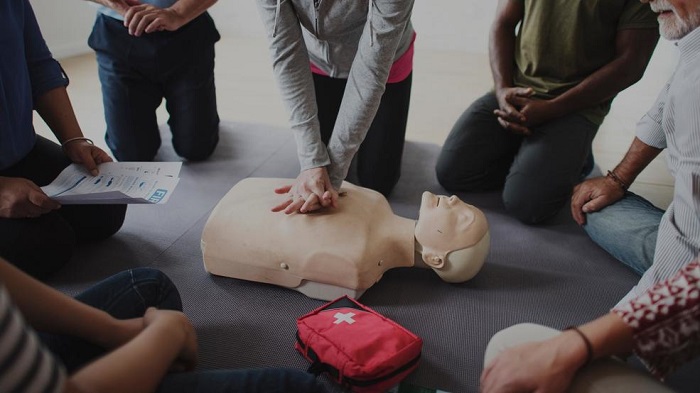The Importance of Getting A CPR/AED Certification

Being trained in CPR and AED use can be lifesaving for others and empowering for yourself. Here are some of the top reasons for getting certified.
Being trained in CPR (cardiopulmonary resuscitation) and in how to use an Automated Axternal Defibrillator (AED) can be invaluable when someone is in serious medical distress. These skills can help save someone who has suffered a heart attack or any form of sudden cardiac arrest. Anyone can learn CPR and become trained in how to use an AED.
Here are some reasons to consider being trained and certified in CPR and AED use.
What is CPR?
According to the Mayo Clinic, CPR is not exclusively a method of restarting the heart. Rather, CPR is used to return the flow of blood and oxygen throughout the body to delay tissue death and brain damage. When the heart stops, the lack of oxygenated blood can cause brain damage in only a few minutes and death within 8 to 10 minutes. CPR consists of two main procedures: external cardiac massage (chest compressions) and artificial respiration (mouth-to-mouth airflow for those that are not breathing).
What is an automated external defibrillator?
CPR, when aided by the use of an AED, can greatly increase the likelihood of the heart restarting. What is an AED and why is it important?
According to the American Heart Association, "An automated external defibrillator is a lightweight, portable device that delivers an electric shock through the chest to the heart. The shock can potentially stop an irregular heartbeat (arrhythmia) and allow a normal rhythm to resume following sudden cardiac arrest.
"AEDs make it possible for more people to respond to a medical emergency where defibrillation is required. Because AEDs are portable, they can be used by nonmedical people (lay-rescuers). They can be made part of emergency response programs that also include rapid use of 911 and prompt delivery of cardiopulmonary resuscitation. All three of these activities are vital to improving survival from SCA."
Save a life
Being confident in administering CPR and operating an AED in an emergency situation can be lifesaving.
The American Heart Association lists five factors that create a cardiac "chain of survival" for someone who is in cardiac arrest. The first three (and most important) factors are things anyone can do when properly trained. They are:
1. Early identification of a patient in cardiac arrest and activation of the emergency response system
2. Early, high-quality CPR
3. Rapid defibrillation with an AED
The American Heart Association also states that more than 383,000 nonhospital cardiac arrests occur annually, and 70 percent of cardiac arrests occur at home. While calling 911 is essential, starting CPR and being ready to use an AED as you wait for an ambulance can not only save a life, but it can also prevent lasting brain injury from occurring due to a lack of oxygenated blood flow to the brain.
According to Occupational Health & Safety, "Every minute of delay for defibrillator decreases the success of restarting the heart. Approximately 10 percent of people who experience an out-of-hospital cardiac arrest survive, with survival much increased if a bystander quickly retrieves and employs an AED. Time is critical. The earlier a shock is delivered, the greater the chance the neurological damage can be prevented. Having an AED program in place can reduce the response time to an SCA victim by 3-5 minutes."
Peace of Mind
Knowing CPR gives you peace of mind no matter where you are. Whether at work, on vacation, or at home with your family, having the knowledge to save a life brings reassurance and confidence.
With 70 percent of cardiac arrest episodes occurring outside a hospital setting, chances are it could be up to you to jump into action should an emergency occur with your family or co-workers. Once certified, you will be able to confidently think through the simple steps of CPR and AED usage and be prepared mentally to act if a real emergency occurs.
The time is now to become CPR and AED certified. Contact your local American Red Cross for information on classes in your area.
Story Credit: http://kutv.com/features/sinclair-cares/the-importance-of-getting-a-cpraed-certification


